Unveiling the Enigmatic Nature of Iron Meteorites: A Journey into Cosmic Mysteries
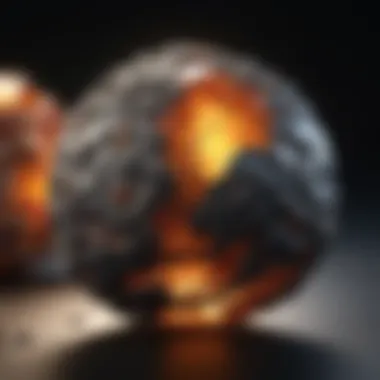
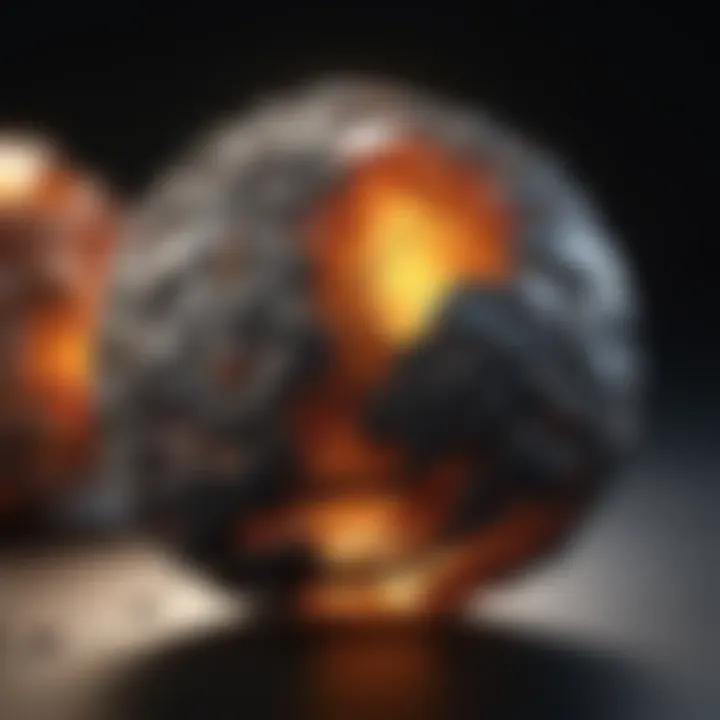
Overview of Iron Meteorites
Iron meteorites, truly enigmatic entities from the cosmos, hold within them secrets as ancient as the universe itself. As we embark on this exploratory journey, we are poised to unravel the mysteries shrouding these celestial visitors. The history behind iron meteorites is a tapestry interwoven with the fabric of space, carrying tales of cosmic origins and Earthly encounters that have left indelible marks on our planet. Through a lens that fuses geology, astronomy, and mystique, iron meteorites beckon us to delve into realms beyond our terrestrial boundaries.
Introduction
Iron meteorites, a captivating enigma of the cosmos, hold a vast trove of secrets waiting to be unveiled. This article embarks on a journey into the profound world of iron meteorites, exploring their composition, characteristics, and significance in both geology and space science. From their celestial origins to the pivotal role they play in shaping Earth's history, iron meteorites present a tapestry of mysteries begging to be deciphered. By delving deep into the realm of these cosmic wanderers, we aim to shed light on their unique properties and the insights they offer about the universe at large.
Understanding Iron Meteorites
The Definition of Iron Meteorites
Iron meteorites, characterized by their high iron content and distinct composition, stand as relics from the depths of space. Their magnetic properties and metallic luster set them apart, making them intriguing subjects of scientific inquiry. The allure of iron meteorites lies in their unaltered nature, offering researchers a pristine glimpse into the raw materials of our solar system. This unadulterated quality makes them a valuable choice for investigations aiming to uncover the secrets of celestial bodies.
Classification Based on Composition
Iron meteorites are classified based on their composition, which varies in terms of nickel content and structural features. This categorization helps scientists understand the meteorites' origins and formation processes. By examining the composition of these meteorites, researchers can discern vital clues about the conditions prevalent in the early solar system. This classification system serves as a crucial tool for organizing and studying iron meteorites, providing valuable insights into their cosmic journey and eventual arrival on Earth.
Formation and Origins
Noble Beginnings in Space
Iron meteorites trace their noble beginnings to the vast expanse of space, where they formed within the cores of asteroids. These cosmic forges, teeming with molten metal, birthed the iron meteorites we scrutinize today. The journey of these meteorites from the depths of space to our planet's surface is a testament to the dynamic and violent processes that shape celestial bodies.
Impact on Earth's History
The arrival of iron meteorites on Earth bears profound implications for our planet's history. From creating impact craters that alter landscapes to providing insights into ancient planetary collisions, these celestial visitors have left indelible marks on Earth's geological record. Unraveling the tales embedded within iron meteorites offers a gateway to understanding the tumultuous history of our planet and the transformative events that have sculpted its surface.
Significance in Geology
Geological Impact and Insights
Iron meteorites wield a significant impact on the field of geology, serving as windows into the formation processes of planetary bodies. By studying the properties of these meteorites, geologists gain invaluable insights into the dynamics of early Earth and the geological forces that shaped our planet. The geochemical signatures preserved within iron meteorites offer a time capsule of information, enabling researchers to piece together Earth's primordial history.
Use in Studying Earth's Formation
Iron meteorites play a pivotal role in elucidating the processes governing Earth's formation and evolution. Their isotopic compositions and elemental ratios provide vital clues about the conditions prevailing in the early solar system. Utilizing iron meteorites as tools for unraveling Earth's geological past enhances our understanding of planetary accretion and differentiation, shedding light on the intricate tapestry of events that sculpted our planet into its present form.
Composition and Structure
Iron Dominance
Pure Iron Content
When delving into the realm of iron meteorites, the pure iron content stands out as a defining feature that sets them apart from other meteorite classifications. The high proportion of pure iron present in these meteorites contributes significantly to their unique properties and characteristics. Pure iron content underscores the intrinsic nature of these meteorites, showcasing their purity and structural integrity. This high concentration of iron not only enhances the magnetic susceptibility of iron meteorites but also makes them ideal specimens for scientific study and research purposes. Despite the advantages of pure iron content, it is essential to consider the potential drawbacks, such as susceptibility to corrosion and the need for specialized handling to preserve their integrity.
Alloy Composition
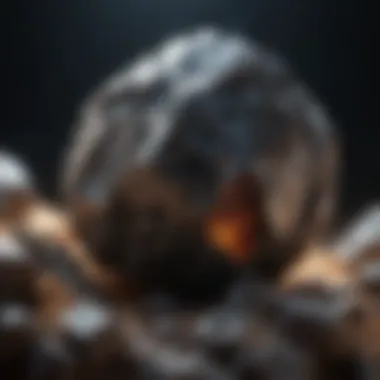

Another critical aspect of iron meteorites is their alloy composition, which introduces additional elements into the mix, further diversifying their properties. The alloy composition of iron meteorites imparts specific traits that differentiate them from terrestrial iron sources, highlighting their extraterrestrial origins. By examining the alloy composition, researchers can decipher the intricate patterns and variations within iron meteorites, providing valuable clues about the processes that shaped these cosmic artifacts. This unique feature not only enriches the scientific understanding of iron meteorites but also contributes to the broader narrative of planetary formation and evolution. However, it is crucial to acknowledge the potential complexities associated with alloy composition, including variations in structural integrity and chemical reactivity that may impact the overall composition and properties of iron meteorites.
Widmanstädten Patterns
Unique Structural Features
The Widmanstätten patterns present in iron meteorites serve as distinctive structural features that capture the imagination of researchers and enthusiasts alike. These intricate patterns result from the slow cooling process that iron meteorites undergo over millions of years in the depths of space. The Widmanstätten patterns not only showcase the inherent beauty of these cosmic relics but also provide valuable insights into their formation history. By studying these unique structural features, scientists can unravel the age-old mysteries surrounding the origins of iron meteorites, piecing together the timeline of events that led to their arrival on Earth.
Formation and Explanation
The formation and explanation of Widmanstätten patterns offer a fascinating lens through which to understand the journey of iron meteorites from the vast reaches of space to the confines of our planet. The intricate process of pattern formation sheds light on the dynamics of cooling and crystallization that shaped these meteorites, unveiling the intricate details hidden within their crystalline structures. Exploring the formation and explanation of Widmanstätten patterns provides researchers with critical information about the conditions prevalent in space and the transformative forces at play during the meteorites' journey. While these patterns offer valuable clues about the provenance of iron meteorites, they also present challenges in interpretation and analysis, demanding a meticulous approach to unraveling their underlying significance.
Inclusions and Impurities
Traces of Other Elements
Inclusions and impurities found within iron meteorites, such as traces of other elements, add a layer of complexity to their composition and structure, further highlighting their celestial origins. These traces of other elements provide clues about the environments in which iron meteorites formed and the processes that influenced their development over time. By examining these inclusions and impurities, scientists can glean essential information about the genetic history of these meteorites, shedding light on the interactions that occurred within their cosmic birthplace.
Impact on Meteorite Properties
The presence of inclusions and impurities within iron meteorites can have a profound impact on their properties, influencing a wide range of characteristics such as magnetic susceptibility and structural stability. These inclusions not only contribute to the aesthetic appeal of iron meteorites but also play a crucial role in determining their scientific value and research implications. Understanding the implications of inclusions and impurities on meteorite properties is essential for distinguishing authentic specimens from counterfeit or altered counterparts, safeguarding the integrity of scientific investigations and ensuring the accuracy of research findings.
Characteristics and Properties
Iron meteorites possess unique characteristics and properties that set them apart in the realm of space science. Their magnetic susceptibility, density, weight, and surface features provide valuable insights into their composition and origins. Understanding the magnetic properties of iron meteorites is crucial in deciphering their history and geological significance. These properties play a pivotal role in scientific research, offering a glimpse into the mysteries of our universe.
Magnetic Susceptibility
Magnetic Properties of Iron Meteorites:
Exploring the magnetic properties of iron meteorites unveils a fascinating aspect of their composition. These meteorites exhibit exceptional magnetic characteristics due to the presence of pure iron and specific alloys. The magnetic properties enable researchers to study the formation and evolution of these extraterrestrial visitors, shedding light on their journey through space. The distinct magnetic features of iron meteorites make them a valuable choice for study, providing crucial data for scientific inquiries.
Detection and Measurement:
The detection and measurement of magnetic susceptibility in iron meteorites offer valuable information for researchers. By assessing the intensity and direction of magnetic fields, scientists can gather data on the meteorites' composition and structure. This analytical approach aids in classifying meteorite types and understanding their place in the solar system. While detection and measurement techniques have limitations, they remain essential tools in unraveling the mysteries of iron meteorites.
Density and Weight
Heavy Metal Content:
The density and weight of iron meteorites stem from their heavy metal content, primarily composed of iron and nickel. This significant metal concentration contributes to the distinct characteristics of these meteorites, making them substantial in comparison to other space rocks. The heavy metal content assists in differentiating iron meteorites from stony or stony-iron meteorites, emphasizing their unique composition and properties.
Impact on Handling and Analysis:
The density and weight of iron meteorites play a crucial role in their handling and analytical procedures. The substantial mass of these meteorites requires specific techniques for transport, storage, and examination. Understanding the impact of density on analysis helps researchers draw accurate conclusions about the meteorites' composition and formation processes. Despite challenges in handling heavy meteorites, their weight provides valuable data for scientific investigations.
Surface Features
Regmaglypts:


The regmaglypts found on the surface of iron meteorites reveal unique sculpted features caused by atmospheric entry and ablation. These thumbprint-like impressions signify the meteorite's passage through Earth's atmosphere, shaping its surface over millennia. Regmaglypts serve as visible reminders of the meteorite's cosmic journey, offering researchers clues about its trajectory and entry conditions.
Fusion Crust:
The fusion crust of iron meteorites protects the underlying material from environmental interactions and oxidation. This thin, blackened exterior forms as the meteorite heats up during atmospheric entry, creating a distinct boundary between the interior and exterior surfaces. Studying the fusion crust provides insights into the meteorite's thermal history and exposure to space conditions, enriching our understanding of its story and origins.
Classification and Types
Iron meteorites are a captivating subject within the larger domain of meteoritics, offering insights into the diverse range of compositions and structures present in these celestial objects. Understanding the classification and types of iron meteorites is paramount in deciphering their origins, formation processes, and significance in geological and astronomical studies. By categorizing iron meteorites into distinct groups based on their structural patterns and unique characteristics, researchers can unravel the mysteries encapsulated within these extraterrestrial relics. Each type, whether octahedrites, hexahedrites, ataxites, or pallasites, presents a window into the complexities of cosmic evolution, providing invaluable data for scientific exploration.
Octahedrites and Hexahedrites
Differentiated by Structural Patterns
Octahedrites and hexahedrites stand out in the realm of iron meteorites due to their distinctive structural patterns, characterized by intricate interlocking crystals known as Widmanstätten patterns. These patterns, formed during the slow cooling process in space, offer valuable information about the cooling rates and thermal histories of these meteorites. The presence of octahedral or hexahedral crystal structures sets these meteorites apart, enabling researchers to make precise classifications and infer specific details about their formation and journey through space. Additionally, the orientation and arrangement of these crystal structures provide clues about the conditions present in the early solar system, shedding light on the dynamic processes at play during the formation of these extraterrestrial materials.
Unique Characteristics
The unique characteristics of octahedrites and hexahedrites contribute significantly to the comprehensive study of iron meteorites. The presence of the Widmanstätten patterns not only adds aesthetic value to these meteorites but also serves as a vital indicator of their extraterrestrial origins. These patterns exhibit a level of symmetry and orderliness that is rare in terrestrial iron formations, emphasizing the distinct nature of these celestial relics. Furthermore, the composition and distribution of nickel-iron minerals within these structural patterns offer researchers a peek into the thermal and chemical environments prevalent in the early solar system, offering a glimpse into the conditions that prevailed during the formation of these meteorites. These unique characteristics make octahedrites and hexahedrites essential subjects of study in the classification and analysis of iron meteorites.
Ataxites and Pallasites
Rare and Intriguing Types
Ataxites and pallasites represent some of the rarest and most intriguing types of iron meteorites, captivating researchers with their unique compositions and features. Their scarcity in comparison to other iron meteorite types adds to their allure, making them subjects of intense interest and scrutiny in the scientific community. Ataxites, known for their high nickel content and uniform structure, present researchers with insights into the core formation processes of differentiated bodies in the early solar system. Pallasites, on the other hand, intrigue scientists with their unique combination of olivine crystals embedded in an iron-nickel matrix, offering a glimpse into the complex interplay between metallic and silicate materials during the formation of these exotic meteorites.
Composition and Features
The composition and features of ataxites and pallasites play crucial roles in expanding our understanding of iron meteorites and their implications for planetary formation. The distinct composition of ataxites, characterized by high nickel proportions and a lack of structural patterns, distinguishes them from other iron meteorite classes, prompting investigations into the processes that led to their formation and differentiation. In contrast, pallasites showcase a remarkable juxtaposition of olivine crystals and metallic matrices, hinting at complex interactions between asteroidal cores and mantles. These unique compositions and features offer researchers valuable insights into the geological processes that shaped the early solar system and continue to influence our understanding of celestial bodies beyond Earth.
Study and Research
In the vast expanse of knowledge surrounding iron meteorites, the Study and Research aspect plays a vital role in unraveling their enigmatic nature. Through meticulous analysis and investigation, researchers delve deep into the composition, structure, and unique properties of these celestial entities. The research endeavors aim to shed light on the origins of iron meteorites, decipher their journey through space, and comprehend their significance in both geological and astronomical contexts. By employing a myriad of analytical techniques, scientists can extract valuable data that contributes to a comprehensive understanding of these extraterrestrial visitors. The Study and Research segment not only facilitates academic exploration but also paves the way for groundbreaking discoveries that reshape our perception of the cosmic realm.
Analytical Techniques
Microscopic Analysis
Microscopic Analysis emerges as a cornerstone in the study of iron meteorites, offering researchers a magnified view of these celestial specimens. By scrutinizing the minute details and intricate structures present within iron meteorites, scientists can uncover hidden features that provide crucial insights into their origins and formations. The high resolution of microscopic analysis allows for the identification of mineral phases, inclusions, and structural characteristics that elude the naked eye. This meticulous approach aids in determining the processes that shaped iron meteorites, such as cooling rates, crystallization patterns, and the presence of unique minerals. Despite its time-consuming nature, microscopic analysis stands as an indispensable tool in unraveling the mysteries encapsulated within iron meteorites.
Isotopic Studies
Isotopic Studies serve as a fundamental aspect of iron meteorite research, offering a glimpse into the elemental composition and isotopic ratios present in these extraterrestrial entities. By analyzing the isotopic signatures of different elements within iron meteorites, researchers can discern valuable information regarding their parent bodies and formation processes. Isotopic studies enable scientists to distinguish between different meteorite classes, trace their evolution over time, and even link them to specific regions within the solar system. This analytical approach provides crucial data for determining the age of iron meteorites, uncovering their cosmic histories, and establishing connections with other celestial bodies. Despite its intricacies, isotopic studies stand at the forefront of unraveling the complex tapestry of iron meteorites.
Laboratory Experiments
Simulating Extraterrestrial Conditions
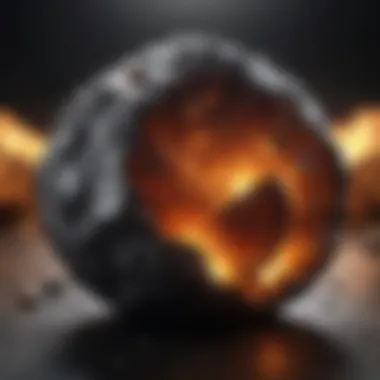
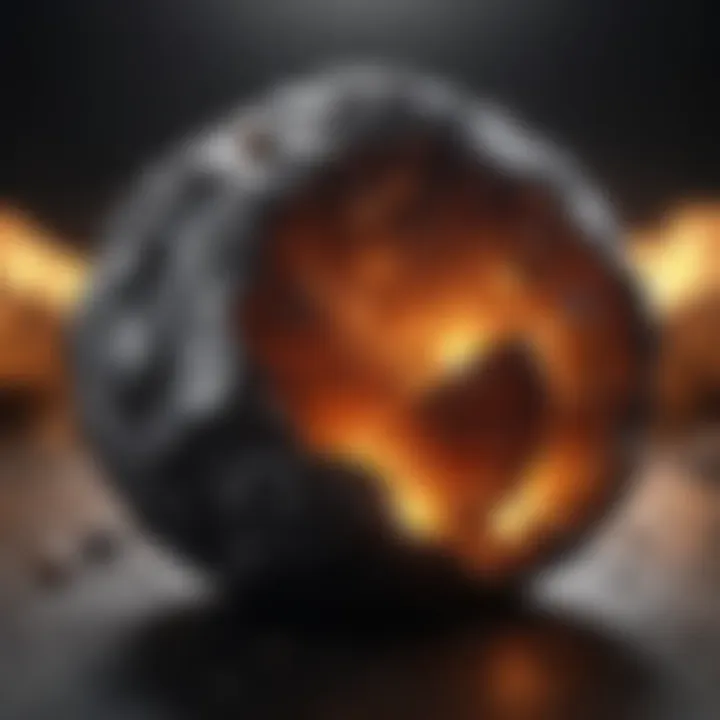
Laboratory experiments involving the simulation of extraterrestrial conditions offer a unique perspective into the formation and evolution of iron meteorites. By subjecting meteorite samples to conditions reminiscent of outer space environments, scientists can replicate the extreme temperatures, pressures, and chemical reactions that shape these celestial bodies. The simulation of such conditions allows for the recreation of meteorite formation processes, the identification of potential geochemical reactions, and the validation of theoretical models proposed for their origin. This experimental approach provides valuable insights into the formation mechanisms of iron meteorites, offering a glimpse into the dynamic processes that govern their existence within the cosmos.
Replicating Meteorite Formation
Replicating Meteorite Formation through laboratory experiments serves as a pivotal method in understanding the intricate processes that led to the creation of iron meteorites. By recreating the conditions prevalent during meteorite formation, researchers can mimic the crystallization, solidification, and chemical interactions that occur in space. This experimental replication allows for the observation of structural transformations, the formation of characteristic features like Widmanstätten patterns, and the identification of key factors influencing meteorite composition. Through meticulously replicating meteorite formation in controlled settings, scientists can gain valuable insights into the geological and astronomical phenomena that govern the genesis of iron meteorites, shedding light on their cosmic significance and geological impact.
Applications and Discoveries
Iron meteorites are not just celestial curiosities; they have practical applications that extend into various fields. This section sheds light on the intriguing uses and discoveries associated with these cosmic remnants.
Industrial Uses
Iron Meteorites in Manufacturing:
The utilization of iron meteorites in manufacturing processes brings a touch of the cosmos to earthly applications. These meteorites, with their high iron content and unique alloy composition, offer distinct advantages in specific industrial applications. Their pure iron content makes them valuable resources for specialized manufacturing where purity is paramount. Additionally, the alloy composition of iron meteorites adds to their appeal, providing properties not commonly found in terrestrial materials. The inclusion of trace elements from space contributes to their exceptional characteristics.
Thus, iron meteorites play a crucial role in enhancing the performance of manufactured goods in industries demanding high purity and unique material properties. Their distinctiveness provides a novel avenue for exploring unconventional manufacturing materials that bring a cosmic connection to terrestrial products.
Technological Applications:
The technological applications of iron meteorites are equally impactful, offering solutions beyond the confines of traditional materials. Their magnetic susceptibility and density make them valuable in technological advancements where these properties are critical for functionality. Iron meteorites find application in various technological fields, where their unique characteristics provide advantages not easily attainable through conventional materials.
The magnetic properties of iron meteorites enable their use in specialized technologies requiring precise detection and measurement. Moreover, their heavy metal content contributes to their significance in applications where weight plays a crucial role in functionality and efficiency. The surface features of iron meteorites, such as regmaglypts and fusion crust, further enhance their usability and appeal in technological innovations.
Scientific Breakthroughs
The study of iron meteorites has led to significant scientific breakthroughs that deepen our understanding of the universe and its evolution. This section explores the critical insights and contributions that iron meteorites offer to the fields of solar system evolution and cosmology.
Insights into Solar System Evolution:
Iron meteorites provide valuable insights into the evolution of the solar system, offering a glimpse into its ancient history. By analyzing the composition and structure of iron meteorites, scientists can piece together the puzzle of how our solar system formed and evolved over billions of years. The key characteristic of iron meteorites in providing direct samples from early solar system materials makes them indispensable in unraveling mysteries surrounding planetary formation and dynamics.
Additionally, the unique features found in iron meteorites, such as widmanstätten patterns and inclusions, provide crucial data points for tracing the evolutionary paths of celestial bodies. By studying these features, researchers can reconstruct past processes that shaped the solar system, shedding light on the complex interactions that led to its current state.
Contribution to Cosmology:
Iron meteorites have made significant contributions to cosmological research by offering tangible evidence of universal processes. Their composition and properties hold clues to the origins of the cosmos and the fundamental principles governing its structure. The key characteristic of iron meteorites in containing isotopic signatures from distant stellar environments enables researchers to trace the origins of elements and their journey through space.
Moreover, the unique features of iron meteorites, such as rare ataxites and pallasites, present opportunities to study exotic materials that provide insights into cosmic phenomena. Their contribution to cosmology extends beyond Earth-bound studies, offering a bridge to understanding the larger cosmic tapestry and our place within it.
Conclusion
Iron meteorites remain as enigmatic cosmic entities that offer valuable insights into the formation of our solar system and Earth's geological history. Through in-depth exploration and research, the mysteries surrounding these celestial rocks continue to captivate scientists and enthusiasts alike. By delving into their composition, characteristics, and significance within geology and space science, we can unlock a treasure trove of information that sheds light on the fundamental forces at play in our universe. Thus, the examination of iron meteorites not only expands our knowledge but also paves the way for future discoveries that have the potential to reshape our understanding of the cosmos.
Unveiling the Mysteries
Continued Exploration and Research
Exploration and research into iron meteorites constitute a crucial aspect in unraveling the mysteries of these cosmic remnants. Continued scientific endeavors in this field provide valuable data that aids in deciphering the origins and histories of these extraterrestrial materials. By employing cutting-edge analytical techniques and conducting meticulous laboratory experiments, researchers can unveil hidden facets of iron meteorites, advancing our comprehension of their formation mechanisms and evolution. The diligent scrutiny of these celestial bodies through continued exploration and research contributes significantly to broadening our insights into the dynamics governing our solar system and beyond.
Impact on Future Discoveries
The impact of studying iron meteorites extends far beyond the confines of their immediate composition and properties, catalyzing future discoveries and breakthroughs. By comprehensively understanding the nature of these meteorites, researchers can glean valuable information that serves as a springboard for novel investigations and explorations. The insights garnered from studying iron meteorites not only enrich our knowledge of space science but also foster innovation and pioneering research efforts. The implications of these findings can potentially revolutionize our perspectives on planetary formation, cosmological phenomena, and the broader cosmic narrative, setting the stage for unprecedented advancements in the realm of astrophysics and geology.







